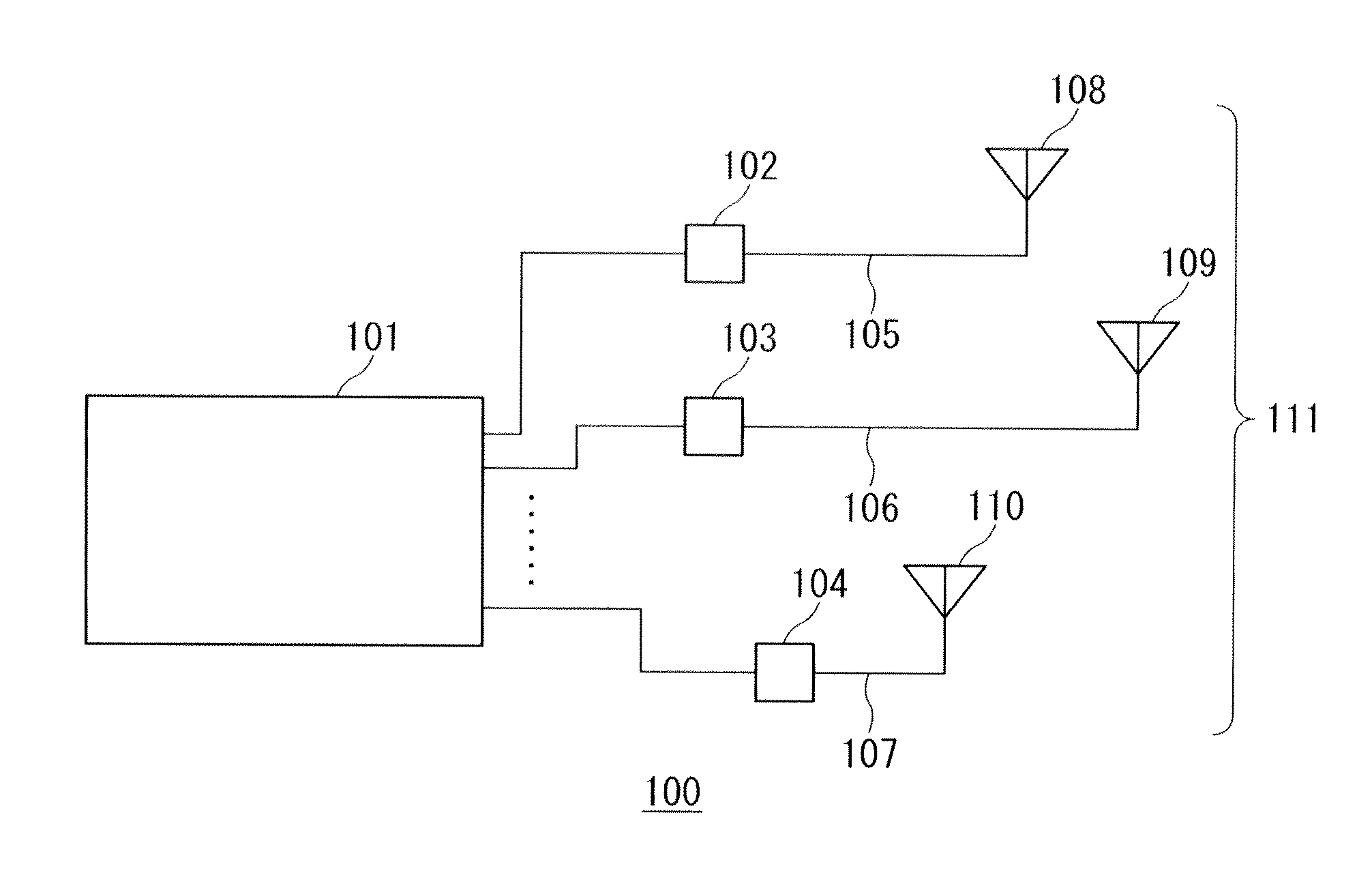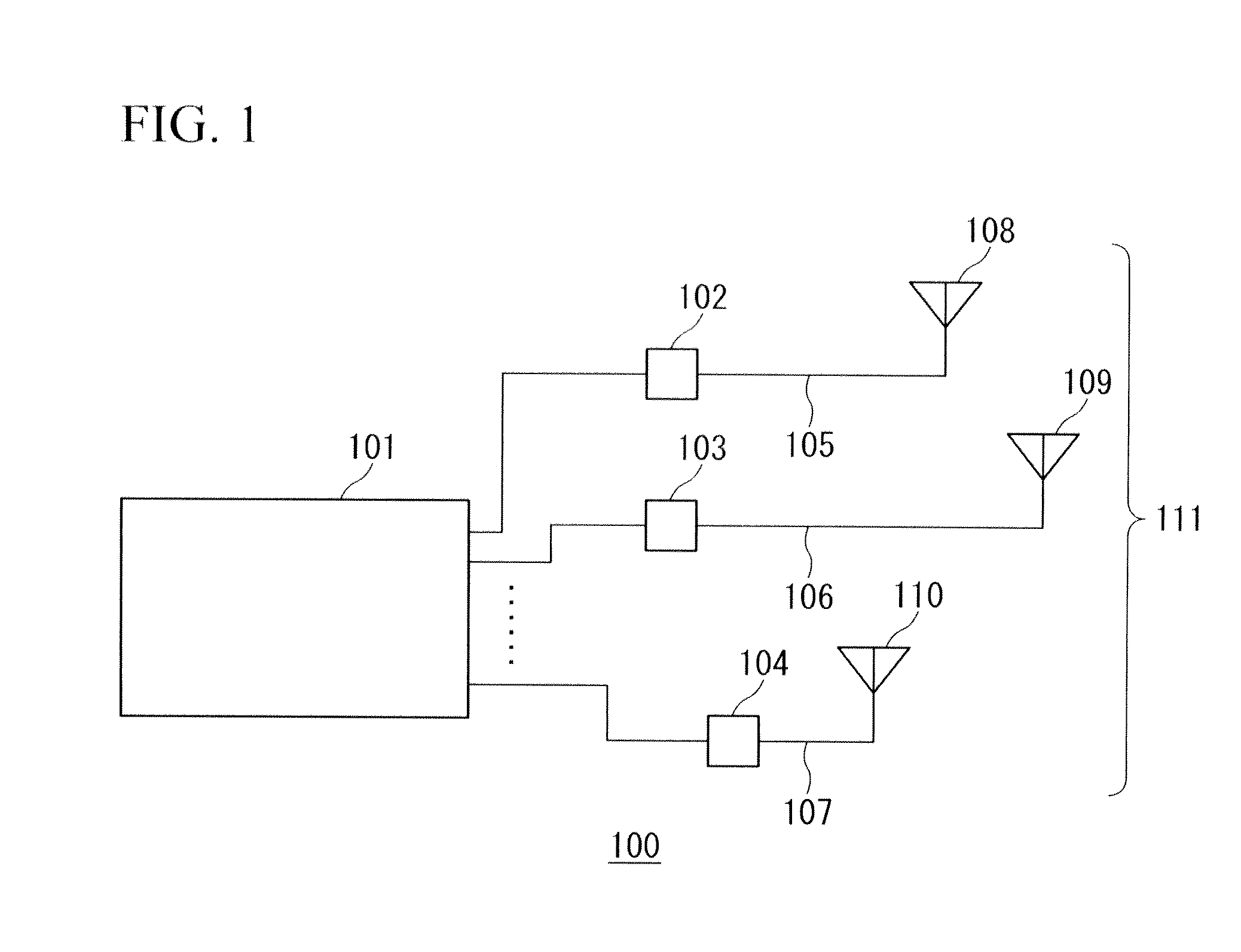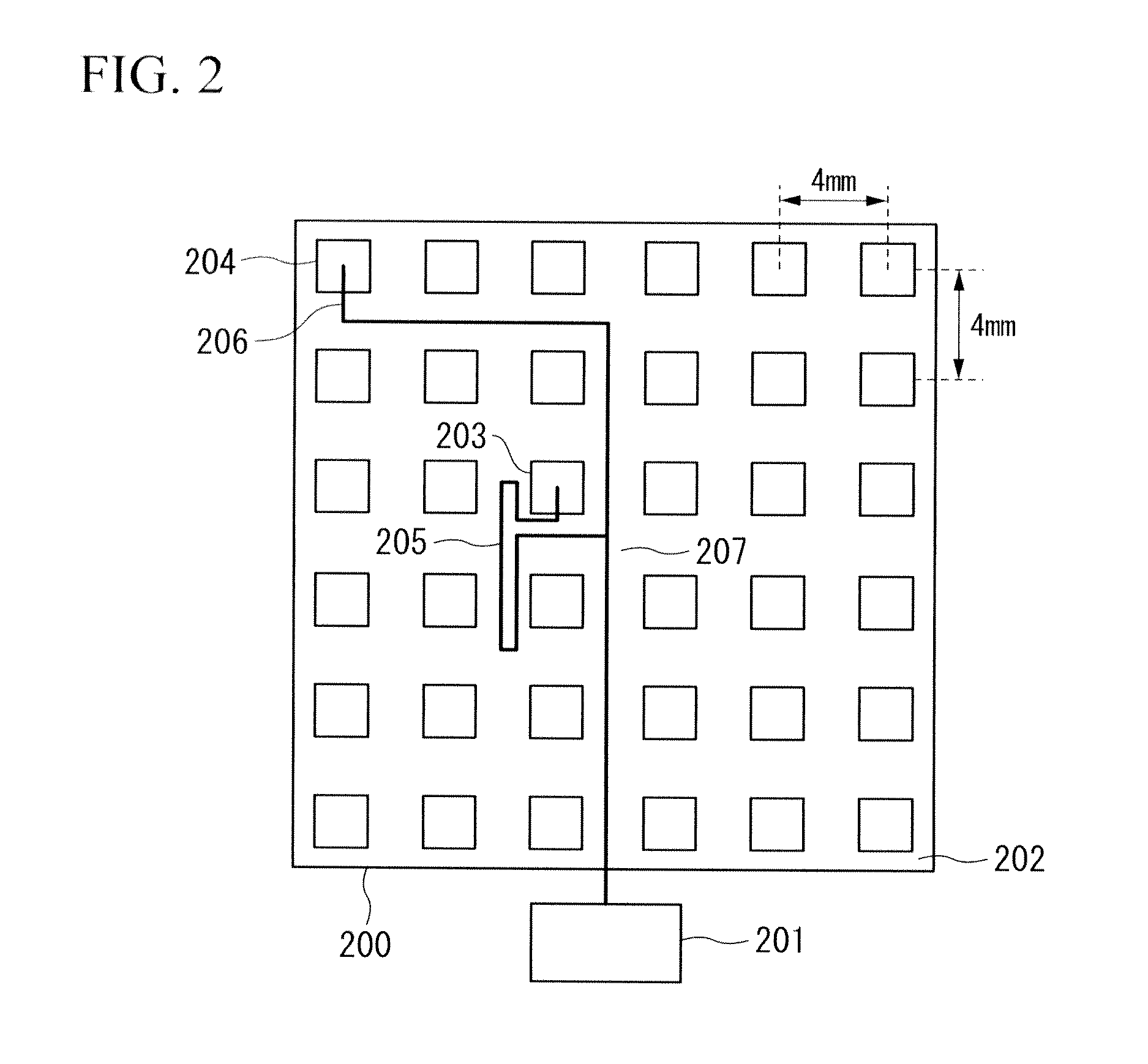Array antenna apparatus having shortest wiring distance to antenna elements
a technology of antenna elements and antenna antennas, applied in the field of array antenna apparatuses, can solve the problems of low noise performance, insufficient output power covered by antenna directional gain, and difficult to obtain high directional gain by a single element, so as to reduce the area and loss of relevant radio apparatus, reduce the redundancy of the feeder line
- Summary
- Abstract
- Description
- Claims
- Application Information
AI Technical Summary
Benefits of technology
Problems solved by technology
Method used
Image
Examples
first embodiment
[0072]FIG. 1 is a block diagram showing the structure of an array antenna apparatus as the present invention. In FIG. 1, an array antenna apparatus 100 consists of a radio circuit 101, an array antenna 111, feeder lines 105, 106, and 107, and delay circuits 102, 103, and 104. The array antenna 111 consists of antenna elements 108, 109, and 110.
[0073]A high-frequency signal output from the radio circuit 101 is supplied to the antenna elements 108, 109, and 110 via the corresponding feeder lines 105, 106, and 107. The delay circuits 102, 103, and 104 are inserted in the middle of the corresponding feeder lines 105, 106, and 107 so as to adjust the input phases for the antenna elements 108, 109, and 110.
[0074]The feeder lines 105, 106, and 107 each have any length.
[0075]The amount of phase delay provided by each of the delay circuits 102, 103, and 104 is defined so that the sum of the phase delay by the relevant delay circuit and a phase delay due to a difference between a reference le...
second embodiment
[0087]FIG. 4 is a block diagram showing the structure of an array antenna apparatus as the present invention. In an array antenna apparatus 400 of FIG. 4, delay circuits 402, 403, and 404 are provided in the radio circuit 101 of the array antenna apparatus 100 of FIG. 1, while the delay circuits 102, 103, and 104 are omitted. In other words, the delay circuits 402, 403, and 404 are provided at the feeder lines 105, 106, and 107 within the radio circuit 101.
[0088]According to the above structure, effects similar to the first embodiment can be obtained, and complexity in the wiring caused by providing the delay circuits at the feeder lines can be reduced.
[0089]That is, since the delay circuits are provided in the radio circuit, an area to be occupied by the delay circuits can be omitted in the feeder line area. Therefore, no detour for avoiding the delay circuits is necessary, thereby reducing the complexity in the wiring.
third embodiment
[0090]FIG. 5 is a block diagram showing the structure of an array antenna apparatus as the present invention. In an array antenna apparatus 500 of FIG. 5, mixer circuits 519, 520, and 521 are respectively connected to the feeder lines 105, 106, and 107 which are connected to the antenna elements 108, 109, and 110 which form the array antenna 111. To the mixer circuits 519, 520, and 521, local signal lines 513, 514, and 515 and base band signal lines 516, 517, and 518 are respectively connected. In addition, delay circuits 402, 403, and 405 are respectively provided at the base band signal lines 516, 517, and 518.
[0091]The mixer circuits 519, 520, and 521 and the delay circuits 402, 403, and 405 are arranged in the radio circuit 101.
[0092]In comparison with the array antenna apparatus 400 of FIG. 4, the array antenna apparatus 500 has a structure in which the delay circuits are provided at the base band signal limes. The delay circuits 402, 403, and 405 control the phases of base ban...
PUM
 Login to View More
Login to View More Abstract
Description
Claims
Application Information
 Login to View More
Login to View More - R&D
- Intellectual Property
- Life Sciences
- Materials
- Tech Scout
- Unparalleled Data Quality
- Higher Quality Content
- 60% Fewer Hallucinations
Browse by: Latest US Patents, China's latest patents, Technical Efficacy Thesaurus, Application Domain, Technology Topic, Popular Technical Reports.
© 2025 PatSnap. All rights reserved.Legal|Privacy policy|Modern Slavery Act Transparency Statement|Sitemap|About US| Contact US: help@patsnap.com



